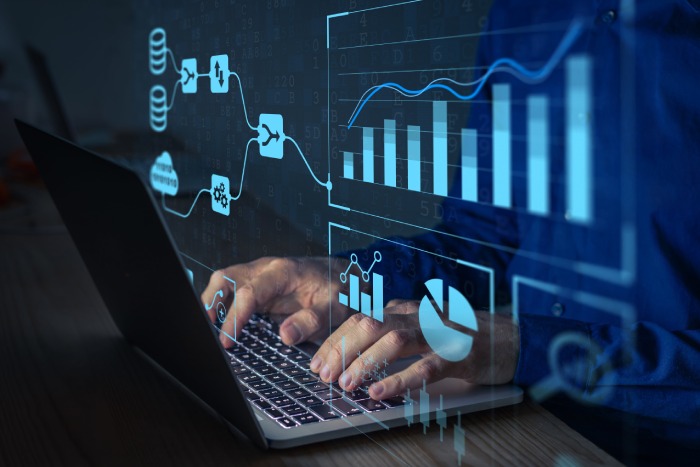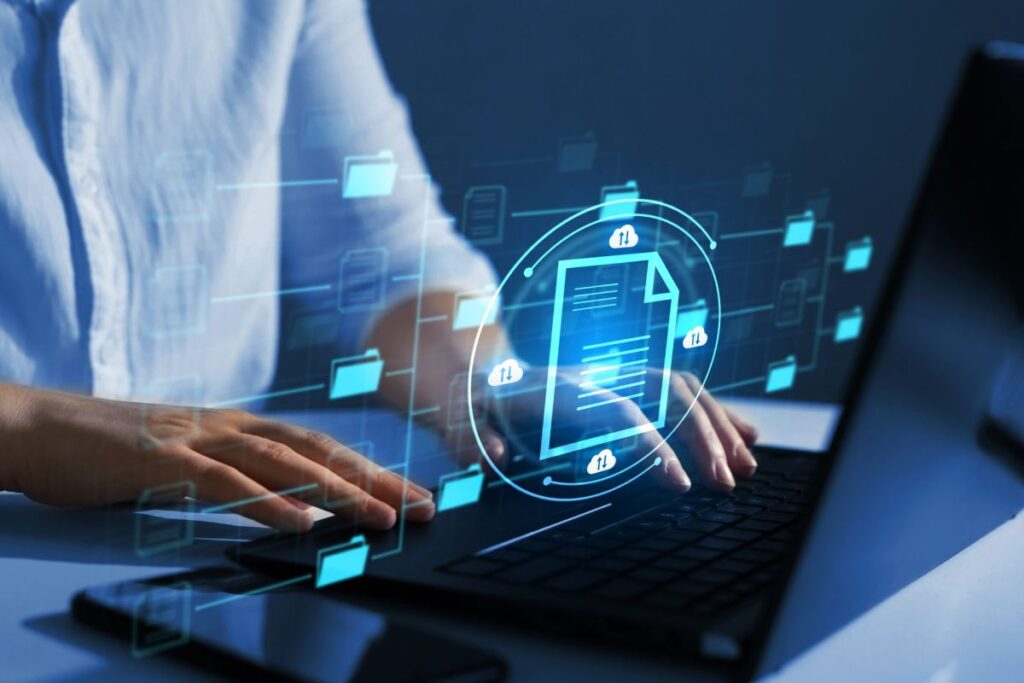Introduction to Computer Processing
In today’s digital age, computer processing lies at the heart of nearly every technological device and system, powering everything from smartphones and laptops to data centers and supercomputers. But what exactly is computer processing, and how does it work? In this comprehensive guide, we’ll explore the fundamentals of computer processing, its components, functions, and its role in shaping the modern world.
What Is Computer Processing?
Computer processing, often referred to simply as processing, is the execution of tasks and operations by a computer system. It includes a wide variety of activities, counting data manipulation, calculations, decision-making, and control of hardware devices. At its core, computer processing involves transforming input data into meaningful output through a series of logical and arithmetic operations performed by the computer’s central processing unit (CPU) and other components.
The Components of Computer Processing

Computer processing involves several key components working together to execute instructions and perform tasks efficiently. These components include:
- Central Processing Unit (CPU): The CPU is the brain of the computer, accountable for executing instructions and performing calculations. It entails of the arithmetic logic unit (ALU) for mathematical operations, the control unit for instruction interpretation and execution, and registers for temporary data storage.
- Memory: Memory, also known as RAM (random access memory), stores data and instructions that the CPU needs to access quickly during processing. It provides temporary storage for program code, variables, and intermediate results, enabling fast and efficient computation.
- Input Devices: Input devices such as keyboards, mice, and touchscreens allow users to interrelate with the computer by providing input data and commands. Input devices convert user input into digital signals that can be processed by the computer.
- Output Devices: Output devices such as monitors, printers, and speakers display or transmit processed data and results to users. These devices convert digital signals generated by the computer into human-readable or perceptible form.
- Storage Devices: Storage devices such as hard drives, solid-state drives (SSDs), and optical discs store data and program files for long-term storage. They provide non-volatile storage, preserving data even when the computer is powered off.
The Functions of Computer Processing
Computer processing performs several essential functions that enable the computer to execute tasks and operate effectively. These functions include:
- Instruction Execution: The CPU fetches instructions from memory, decodes them, and executes them sequentially. Instructions may include arithmetic operations, logical comparisons, data movements, and control flow operations.
- Data Manipulation: Computer processing involves manipulating data stored in memory, registers, and storage devices. This includes performing arithmetic calculations, logical operations, data transformations, and data transfers between different storage locations.
- Decision-Making: Computer processing involves making decisions based on input data, program logic, and predefined conditions. Decision-making may involve conditional branching, loop control, and other control flow mechanisms that determine the flow of execution.
- Input Processing: Computer processing processes input data from various input devices, such as keyboards, mice, sensors, and network interfaces. Input processing involves converting raw input data into digital form, validating input, and preparing it for further processing.
- Output Generation: Computer processing generates output data and results that are presented to users through output devices. Output generation may involve formatting output, rendering graphics, generating reports, and transmitting data over networks.
- Control of Hardware Devices: Computer processing controls hardware campaigns such as disk drives, network interfaces, and display controllers to perform input/output operations and interact with external devices. This includes managing device resources, handling interrupts, and coordinating device communication.
Applications of Computer Processing
Computer processing finds applications across various domains and industries, driving innovation, automation, and efficiency. Some common applications of computer processing include:
- Personal Computing: In personal computing, computer processing powers everyday tasks such as web browsing, email communication, document editing, and multimedia playback. Personal computers, laptops, tablets, and smartphones rely on computer processing to provide a wide range of functionality to users.
- Business and Enterprise Systems: In business and enterprise environments, computer processing supports functions such as accounting, inventory management, customer relationship management (CRM), and enterprise resource planning (ERP). Business systems use computer processing to automate processes, analyze data, and facilitate decision-making.
- Scientific and Engineering Computing: In scientific and engineering fields, computer processing enables simulations, modeling, data analysis, and visualization. High-performance computing (HPC) systems and supercomputers leverage parallel processing and specialized hardware to tackle complex computational problems in areas such as weather forecasting, drug discovery, and aerospace engineering.
- Cloud Computing and Data Centers: In cloud computing and data centers, computer processing powers infrastructure-as-a-service (IaaS), platform-as-a-service (PaaS), and software-as-a-service (SaaS) offerings. Cloud providers use computer processing to provision virtual machines, containers, and serverless computing resources to customers, enabling scalable and flexible computing solutions.
- Artificial Intelligence and Machine Learning: In artificial intelligence (AI) and machine learning (ML), computer processing enables training and inference of AI models, natural language processing, computer vision, and autonomous decision-making. AI and ML algorithms leverage parallel processing and specialized hardware accelerators to analyze large datasets and extract patterns and insights.
Impact of Computer Processing on Society
The widespread adoption of computer processing has had a profound impact on society, transforming how we work, communicate, learn, and interact. Some key impacts of computer processing on society include:
- Increased Productivity: Computer processing has increased productivity across industries by automating repetitive tasks, streamlining workflows, and enabling faster and more effectual data processing. Efficiency tools such as word processors, spreadsheets, and project management software leverage computer processing to enhance collaboration and decision-making.
- Improved Communication: Computer processing has revolutionized communication through email, instant messaging, social media, and video conferencing. Digital communication tools enable real-time collaboration, global connectivity, and information sharing, breaking down barriers of time and distance.
- Access to Information: Computer processing has democratized access to information by providing instant access to vast amounts of data and knowledge resources. Search engines, online databases, and digital libraries empower individuals to find information quickly and easily, enabling lifelong learning and research.
- Innovation and Creativity: Computer processing fuels innovation and creativity by providing tools and platforms for software development, digital content creation, and artistic expression. Creative professionals use computer processing to produce multimedia content, design digital artwork, and develop interactive applications that entertain, inspire, and engage audiences.
- Economic Growth: Computer processing drives economic growth by fostering entrepreneurship, job creation, and technological innovation. The digital economy relies on computer processing to power e-commerce, online services, digital media, and information technology (IT) infrastructure, creating new opportunities for businesses and workers.
Challenges and Considerations
Despite its numerous benefits, computer processing also presents challenges and considerations that must be addressed:
- Security and Privacy: Computer processing raises concerns about cybersecurity threats, data breaches, and privacy violations. Safeguarding sensitive data, securing networks and systems, and complying with data protection rules are critical for protecting individuals and administrations from cyber threats and risks.
- Digital Divide: The digital divide raises to disparities in admittance to technology, connectivity, and digital skills that exist between different regions, socioeconomic groups, and demographics. Bridging the digital divide requires initiatives to promote digital inclusion, provide affordable access to technology, and offer digital literacy training and education.
- Ethical and Societal Implications: Computer processing raises ethical and societal questions related to artificial intelligence, automation, surveillance, and data governance. Addressing ethical concerns such as bias in AI algorithms, algorithmic transparency, and responsible data use is essential for building trust and ensuring that technology serves the common good.
- Environmental Impact: Computer processing has environmental impacts related to energy consumption, electronic waste, and carbon emissions. Green computing practices, energy-efficient hardware, and sustainable data center design can mitigate the environmental footprint of computer processing and promote environmental sustainability.
Conclusion
Computer processing is a foundational technology that drives innovation, productivity, and connectivity in the digital age. From personal computing and business systems to scientific computing and artificial intelligence. Computer processing powers a wide range of applications and services that shape the modern world.
Understanding the fundamentals of computer processing, its components, functions, and impacts is essential for navigating the complexities of the digital landscape and harnessing the potential of technology for positive social, economic, and environmental outcomes.

